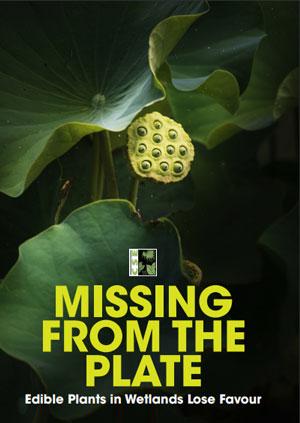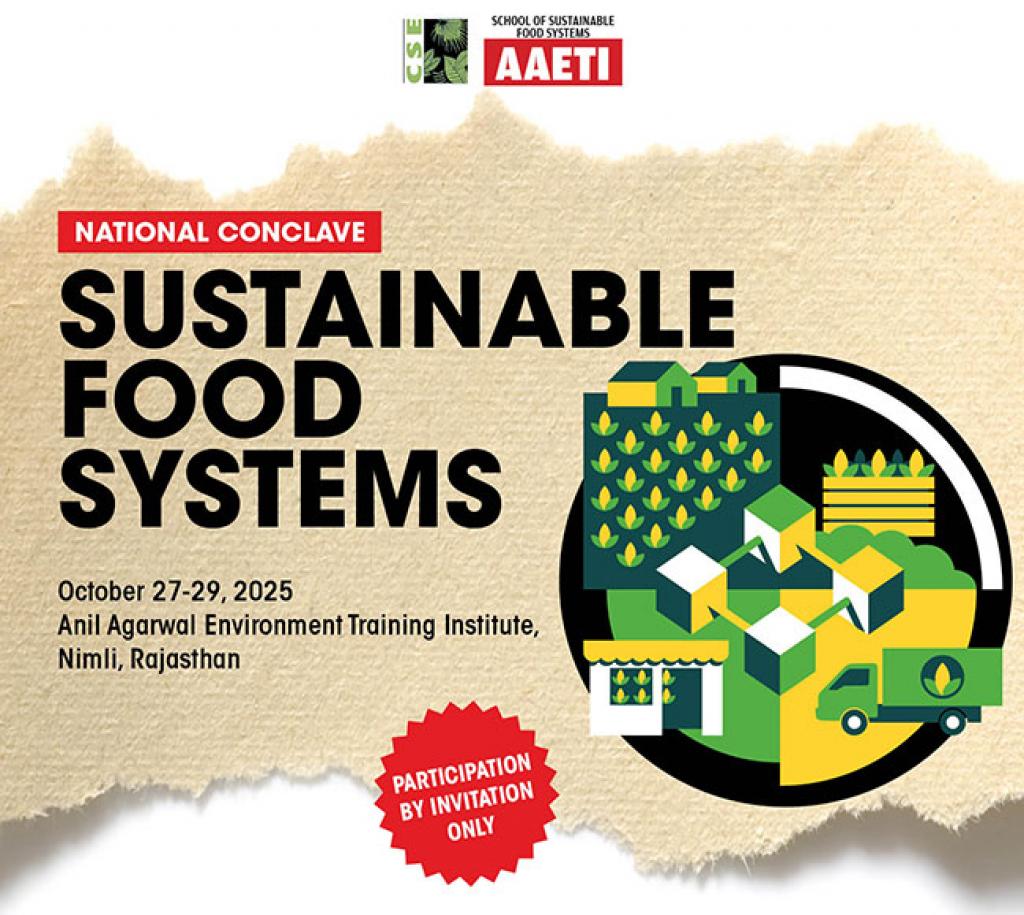CSE’s new report on Sustainable Food Systems presents a roadmap for making agriculture climate-resilient
Report released at three-day National Conclave attended by key stakeholders and experts
New Delhi/Nimli, October 27, 2025: In 2018, about 11 per cent of the world’s greenhouse gas emissions came from the world’s food production systems – its agriculture, its livestock and the pesticides that it uses. At the same time, the producers of this food – the farmers and livestock rearers – have remained the first and one of the most severely impacted victims of climate change. Despite this, says Centre for Science and Environment (CSE) director general Sunita Narain,“while we discuss a lot about the contribution of fossil fuels to emissions and climate change, we do not talk enough about the other elephant in the room: agriculture and the food we eat.”
Narain was speaking today at a national meet organised by CSE to talk about this “other elephant”. The National Conclave on Sustainable Food Systems, which is being held at the Anil Agarwal Environment Training Institute (AAETI) in Nimli (Rajasthan) from October 27 to 29, 2025, has brought together some key experts and stakeholders from across the country to discuss a wide range of topics: from soil health and voluntary carbon markets to weather forecasting and agro-meteorological advisories, and from crop insurance to issues related to emissions from livestock and poultry management systems.
CSE released its two new reports on this occasion. Sustainable Food Systems: An agenda for climate-risked times, the first of these, is a comprehensive assessment of some critical and interconnected aspects which can lead to sustainability in the way we produce, distribute and consume food. The second report – Missing from the Plate: Edible plants in wetlands lose favour – is a unique documentation of edible plants that grow in India’s wetlands, and shows how these plants can contribute to food security, health and climate resilience.
Among the key speakers at the conclave today were Ajay VirJakhar, chairperson, Bharat Krishak Samaj; Ramanjaneyulu G V, executive director, Centre for Sustainable Agriculture, Hyderabad; Sudhir Kumar Goel, former additional chief secretary-agriculture and marketing, government of Maharashtra; Apoorva Oza, global lead-agriculture, food security and climate resilience, Aga Khan Foundation; and Sultan Ismail, managing director, Ecoscience Research Foundation, Chennai.
Free download of the reports here:
- Sustainable Food Systems: An Agenda for Climate-risked Times
- Missing from the Plate: Edible Plants in Wetlands Lose Favour
Speaking at the conclave, Amit Khurana, director, food systems programme at CSE, said: “Farmers today are beset by multiple crisis that threatens their very survival – high and increasing inputcosts, lack of public infrastructure, galloping food costs, and the severe impacts of extreme weather.”
Elaborating on the impacts of climate change on agriculture in India, the CSE report quotes government data to say that in the absence of adaptation measures, rain-fed rice yields are projected to reduce by 20 per cent by 2050 and by 47 per cent in 2080; similarly, irrigated rice yields may go down by 3.5 per cent in 2050 and 5 per cent by 2080. Ninety per cent of the country’s 573 rural districts face climate risks; rising temperatures are leading to increased incidence of pest and disease outbreaks, affecting crop productivity; and erratic monsoon trends have meant growing water stress.
In her address, Narain pointed out that there are two distinct agricultural worlds today: one is the industrial agriculture model, which advocates an intensive farming system with large farm sizes and animal holdings and massive chemical inputs. The other is the subsistence scale agriculture, in which farmers with small landholdings are engaged in growing food and rearing livestock for their own consumption or for their livelihoods.
“We need to discuss agriculture and climate change in the differing contexts of these two worlds,” says Narain. “Indian farmers – who largely make up the second of these two worlds -- are already at the frontline of climate change impacts, and the exposure to these impacts will be taking an increasing greater toll of their crops and livelihoods. It is imperative, therefore, to understand what needs to be done to make agriculture more resilient to climate change.”
The agriculture model that the CSE report advocates recommends four key interventions.
- Make agriculture low input, protect the farmer from risks: “Low input agriculture is not necessarily low in productivity. Maintain soil health, provide irrigation, use non-chemical alternatives to pesticides, and invest in markets that will provide opportunities to farmers to maximise their gains,” says Narain.
- Minimise risk in agriculture: Promote multiple-option cropping systems and livestock economy –allow for income generation from different sources.
- Grow crops that are nutrition-rich and compatible with local environments: The government should bring in policies that will encourage growing of such crops. For instance, in regions that are water-scarce farmers can invest in crops like millets that are water-prudent.
- Carefully choose what we eat: The choice of the food that farmers grow is governed by consumers. If consumers change their diets, it tells the farmers to grow differently and invest more in foods that have nutritive and climate-resilient properties.
Narain summed up the issue thus: “The food-climate-nutrition connection is not about being vegan, vegetarian or even organic. It is about how food is grown, what we eat for nutrition, and how much we eat.”
For more on the Conclave, click here
For any other details, please connect with Sukanya Nair of The CSE Media Resource Centre, sukanya.nair@cseindia.org, 8816818864.



Share this article